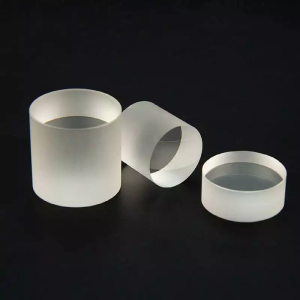Evaporation deposition
During evaporative deposition, the source material in the vacuum chamber is heated or bombarded by an electron beam and evaporates. The vapor condenses on the optical surface. During evaporation, uniform optical coatings with a specific thickness can be manufactured by precisely controlling heating, vacuum pressure, substrate positioning and rotation. Evaporation has a relatively mild nature, which will make the coating loose or porous. This loose coating has water absorption, which changes the effective refractive index of the film and will lead to performance degradation. The evaporation coating can be enhanced by ion beam assisted deposition technology. During this process, the ion beam will aim at the substrate surface. This increases the adhesion of the source material to the optical surface, generates more stress, and makes the coating more compact and durable.
Ion beam sputtering (IBS)
In ion beam sputtering (IBS), high energy electric field can accelerate ion beam. This acceleration gives the ions significant kinetic energy. When striking the source material, the ion beam will “sputter” the atoms of the target material. These sputtered target ions (atoms become ions under the influence of ionization zone) also have kinetic energy, which will produce dense films when contacting with optical surfaces. IBS is an accurate and repeatable technology.
Plasma sputtering
Plasma sputtering is the general term of a series of technologies, such as advanced plasma sputtering and magnetron sputtering. No matter what kind of technology, it includes the generation of plasma. The ions in the plasma are accelerated into the source material, hit the loose energy source ions, and then sputtered onto the target optical elements. Although different types of plasma sputtering have their unique properties, advantages and disadvantages, we can put these technologies together because they have the same working principle. The differences between them are much smaller than the differences between this coating technology and other coating technologies involved in this paper.
Atomic layer deposition
Unlike evaporative deposition, the source material used for atomic layer deposition (ALD) does not need to be evaporated from the solid, but exists directly in the form of gas. Although the technology uses gas, a very high temperature is still required in the vacuum chamber. In the ALD process, the gas precursor is transmitted by non overlapping pulses, and the pulses are self limiting. This process has a unique chemical design, only one layer is adhered to each pulse, and there is no special requirement for the geometric shape of the optical element surface. Therefore, this process allows us to highly control the coating thickness and design, but it will reduce the deposition rate.
Coating process
Different coating deposition technologies have their own advantages and disadvantages. Borisun Optics can use different coating and deposition technologies to serve you. Please contact Borisun Optics to tell us which coating technology is most suitable for your application.



